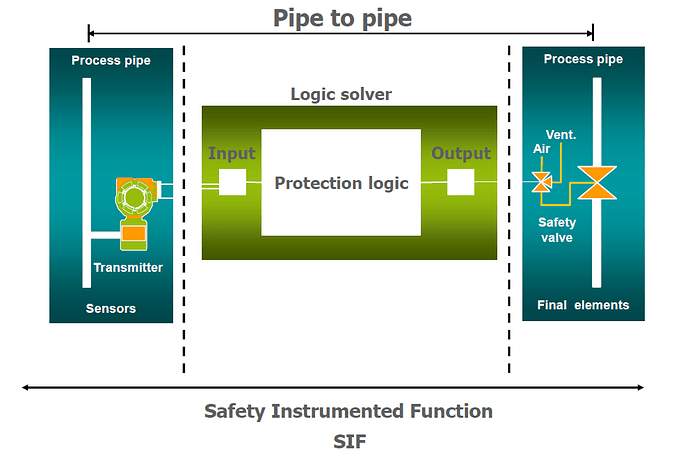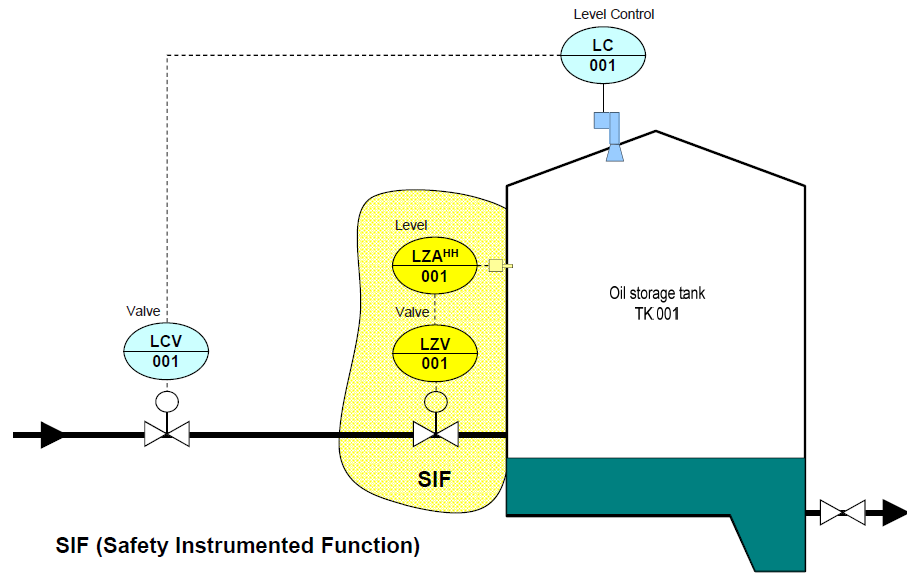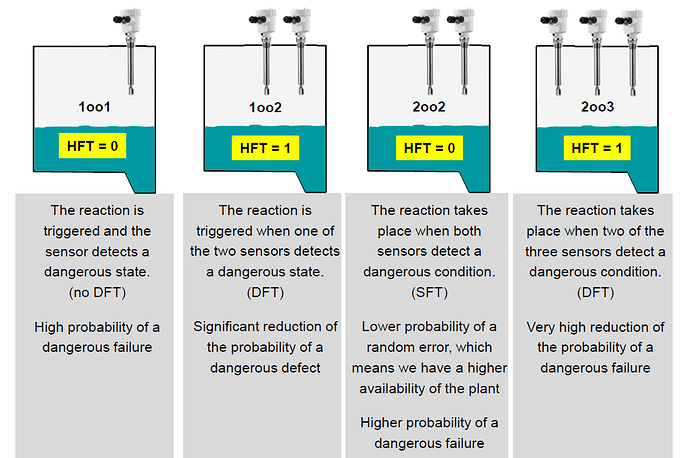- Why do we care for Functional Safety?
- Examples of historical accidents in process industry
- Short overview of standards and regulations
- Identification and Quantification of Risks
- What is a risk?
- Risk identification (HAZOP)
- Risk Analysis
- How to quantify the risk?
- Parameter for SIL-Classification
- Error types
- HFT, SFF, PFD, λ, MTBF
- SIF / SIS
- SFF Analysis / PFD
HFT (Hardware Fault Tolerance)
The HFT of a device indicates the quality of a safety function:
HFT = 0 Single-channel use.
A single fault may cause a safety loss.
HFT = 1 Redundant version.
At least two hardware faults must occur at the same time to cause a safety loss.
Through proved operation as well as different safety requirements the value of the needed HFT can be reduced by ‘1‘ according to IEC 61511.
The voting is defined as follows
- The number of paths (N), which is the sum of the redundant paths (M) are required to run the safety function.
- Frequently referred to as NooM or XooY
- Examples 1oo2, 2oo3, 2oo4, etc.
Download:
Functional Safety.pdf (1.1 MB)


